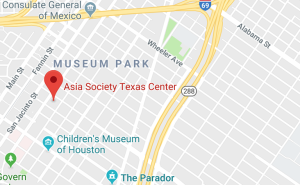Universe Is Flux: The Art of Tawara Yūsaku
The true nature of existence lies in change itself, so that change—or flux—is the fundamental principle of the macrocosm. From this it follows that I am composed of a bundle of waves or flux. — Tawara Yūsaku (1932-2004)
Organized by the Indianapolis Museum of Art, Universe Is Flux: The Art of Tawara Yūsaku is the first large-scale exhibition in this country of the famed Japanese artist’s paintings. On view in the Louisa Stude Sarofim Gallery from June 19 through September 15, 2013, Universe is Flux presents an artist whose evocative gestural paintings convey the world as unstable and constantly changing. Asia Society Texas Center is honored to host this exquisite look at his work.
Tawara saw all existence as composed of vibrational energy made up of wavelike forms he called “hado.” Through the cumulative effect of many brushstrokes, he translated this vision of reality into paintings with intense visual impact apparent even in his smallest 3 in. x 5 in. paintings. Although he eschewed representational art, many of his paintings recall traditional ink landscapes or other forms in nature.
Before she died my mother left me with words that seemed like a Zen koan:
“Above the clouds the weather is always fine.” I came to think that one day I would like to try to paint that world “above the clouds.”
Recognized in Japan as a connoisseur, collector, and proprietor of a famous folk art shop in Tokyo, Tawara returned to painting late in life. The exhibition will feature 77 works, mostly ink on paper, created in the 1990s, following a decades-long hiatus from painting, as well as pieces created just before his death in 2004.
Highlights of the exhibition include several renditions of the character “ichi,” which means “one” in Japanese. For the artist, it signifies more than a number. It is “the ‘One’ to which all things are ultimately reducible. It is the ‘One’ of the absolute world.” Traditionally executed in a single stroke in calligraphy, Tawara painted these ichi with his method of layering innumerable brushstrokes.
“I can't think of a better artist to deepen Houstonians’ understanding and appreciation of the beauty and poetry of East Asian ink painting,” says Hao Sheng, formerly with the Museum of Fine Arts, Boston and now a curatorial consultant for Asia Society Texas Center. “Tawara's works are immediately powerful, yet upon close inspection they literally unravel before your eyes and open to a place of luminous serenity—or to borrow his own words, ‘a world above the clouds.’"
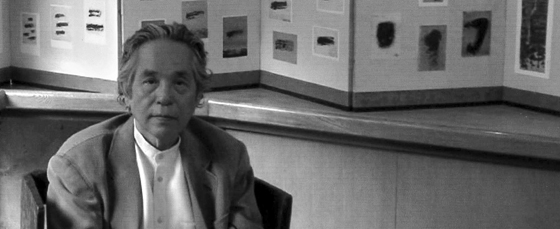
Tawara Yūsaku (1932-2004) was born in present-day Onomichi City in Hiroshima Prefecture. His original name was Okada Toshihiko. He began studying oil painting as a high school student under the tutelage of Kobayashi Wasaku (1888–1974), who gave him the artist name “Tawara Yūsaku” (the character for “saku” being part of his teacher’s name).
In 1951 he entered the Law Faculty of Chuo University in Tokyo. While still a university student he won awards for his paintings, which led to his decision to halt his studies and turn to painting professionally. He formed a painters’ group with Kizawa Teiichi and Hyôdô Kazuo. In 1963, he abruptly decided to put down his brush and quit painting, saying he had come to doubt the validity of his work. Later he often mentioned the opinion of the French artist Balthus, whom he met in 1965, that Asian artists were more suited to working in ink and that their oil paintings lacked power.
In the intervening period before returning to painting, he poured his efforts into polishing his artistic sensibilities through collecting and dealing in ancient and modern art from around the world, and focusing on folk arts and crafts by mounting and writing exhibition catalogues. His activities brought him into close contact with towering figures in the field such as Hamada Shoji (1894–1978). Through his close friendship with Serizawa Keisuke (1895–1984), the textile design artist and Living National Treasure in Japan, he became absorbed in the expressive potential of brush and paper and in 1993 began to paint again.
Image: Tawara Yūsaku at Gallery TOM in Shibuya, Tokyo in September 2003. Photograph by Hiroshi Miura. © Hiroshi Miura.
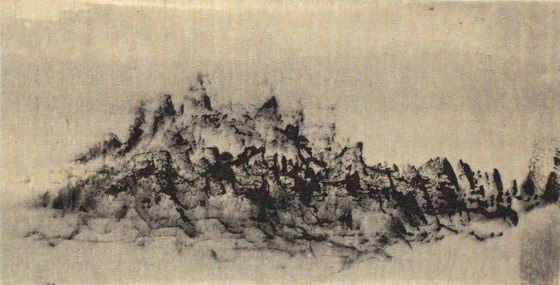
Tawara Yūsaku's ink paintings are revelations. His profound insight, seeing a world of ceaseless transformation, is articulated in paintings of surpassing power and originality. Tawara's work often appears as bold gestures of the brush, yet upon close inspections, what registered as single strokes at first unravel into multitudes, revealing countless pulsating lines that constitute the whole. They are cosmic diagrams for a “universe in flux,” held in consecutive moments of becoming.
For Tawara, the act of painting was an exploratory process, one of communion with the rich array of intellectual and artistic traditions that resonated with his vision. As seen in this exhibition, his references range from Zen Buddhism to Abstract Expressionism, from ink painters of the East Asian tradition to Leonardo da Vinci. Moreover, for Tawara, the act of painting was a means of self-discovery. For the last decade of his life, he painted intensively and daily, repeating the same designs, such as the numeral one, in hundreds of variations. It was a “practice” in the religious sense. By single-mindedly performing a ritual act over and again, he endeavored to shed his own intentions so that the work, in his own words, could stand directly for the “painter as a human being unfettered by his skills.”
Organized by the Indianapolis Museum of Art, the exhibition itself is a revelation. Even in his native country, Tawara is primarily remembered as an accomplished oil painter from the '60s and a critic and proprietor of Mingei folk art. He painted ink paintings for himself and only shared a small number of them with close friends during his life time. This exhibition, with a total of 77 selected works representing the full range of his ink creations, marks the first full scale exhibition of this extraordinary artist. Asia Society Texas Center is proud to present Universe Is Flux: The Art of Tawara Yūsaku. — Hao Sheng, Consulting Curator, Asia Society Texas Center
Image: Tawara Yūsaku (Japanese, 1932–2004), Hōraizan [Mt. Penglai], from Dabuinchi o omoute [Thinking of DaVinci] series, March 26, 1997, ink on paper, image: 1-7/8 x 3-5/8 in., framed: 20-3/8 x 15-3/8 x 1-1/2 in., Indianapolis Museum of Art, Jane Weldon Myers Art Fund, © Tawara Yūsaku
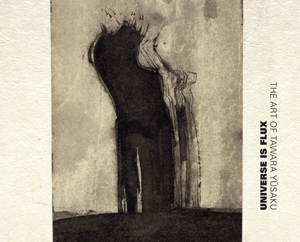
Co-published by the Indianapolis Museum of Art and the University of Washington Press and featuring a number of original scholarly essays, an exhibition catalogue titled Universe Is Flux: The Art of Tawara Yūsaku will be available for purchase at the Texas Center’s Information Desk. The cost is $20 for Asia Society members, $25 for nonmembers. The paperbound catalogue includes 81 color plates and color illustrations.

Schedule
Members Reception
6:00 – 7:00 pm
Public Opening
7:00 – 9:00 pm
Mercury Performance
7:30 – 8:30 pm
On Wednesday, June 19, 2013, a private members reception will be held from 6:00 pm to 7:00 pm. The public opening will take place from 7:00 pm to 9:00 pm.
Anchoring the evening is a site-specific gallery performance by Mercury – the Orchestra Redefined, Antoine Plante, Artistic Director, which begins at 7:30 pm. Performing on period instruments, the celebrated chamber orchestra will present an exquisite program of *contemplative music inspired by Tawara’s work and philosophy.
The program features:
Henry Purcell (1659-1695) Fantasias for Strings
Heinrich Ignaz Franz von Biber (1644-1704) Balletti Lamentabili à 4
John Dowland (1563-buried 1626) Lachrymæ Antiquæ (Ancient Tears)
Hildegard von Bingen (1098-1179) O Virtus Sapientie (O Strength of Wisdom)
Music will also be provided by one of the Texas Center’s favorite locals, DJ Sun. In homage to the art of Tawara, Sun has scoured his collection for some of the most compelling jazz and art music from Japan. Complete the night with light bites from Muiishi Makirritos and Little Soya, a special selection of teas from Té House of Tea, and local sake from Texas Sake Company.
Ikebana Arrangements by Sushila Mathew, Ohara Ikebana School.
*ARTISTIC DIRECTOR'S NOTE: The music presented is meditative in nature. Participants are encouraged to contemplate the art silently while exploring the exhibition halls. Space is limited. The program will be performed twice in order to accommodate as many guests as possible.
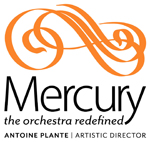

The run of Universe Is Flux will be accompanied by a robust schedule of programs, including curator talks, film screenings, and performances. Check back here in the coming weeks for updates.
Members Brunch with John TeramotoSaturday, June 22 – 11:00 am Asia Society Texas Center Members are invited to brunch with John Teramoto, curator of Universe is Flux: The Art of Tawara Yūsaku. |
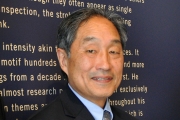 |
ENCOUNTERS: John TeramotoSaturday, June 22 – 2:00 pm A fascinating exploration of Tawara Yūsaku's ink works and the wide-ranging principles upon which they are based. |
 |
Meditation in the GalleriesSundays, August 4 – 28 – 8:30 am These sessions examine the energy of flux and quest for meaning in a rapidly changing world. |
 |
Admission to the exhibition is free for Asia Society members, $5 for nonmembers.
Hours
Tuesday – Sunday, 11:00 am – 6:00 pm
Closed Mondays and major holidays
FOR IMMEDIATE RELEASE
Contact: Tina Zulu
Zulu Creative | Serious Creativity
Office: 888.520.1789 x1 or [email protected]
TAWARA YŪSAKU PAINTS UNIVERSE IS FLUX
Asia Society to host exhibition of famed Japanese artist’s work
HOUSTON, May 13, 2013 — Asia Society Texas Center will host a major exhibition of the work of Tawara Yūsaku (1932-2004), a Japanese artist whose evocative gestural paintings convey the world as unstable and constantly changing. Organized by the Indianapolis Museum of Art, where it debuted, Universe Is Flux: The Art of Tawara Yūsaku comprises 77 works, mostly ink on paper, and runs June 19 through September 15, 2013, in the Louisa Stude Sarofim Gallery. It constitutes the first large-scale exhibition in this country of the artist’s paintings.
Recognized in Japan as a connoisseur, collector, and proprietor of a famous folk art shop in Tokyo, Tawara returned to painting late in life. The exhibition will feature works created in the 1990s, following a decades-long hiatus from painting, as well as pieces created just before his death in 2004.
“I can't think of a better artist to deepen Houstonians’ understanding and appreciation of the beauty and poetry of East Asian ink painting,” says Hao Sheng, formerly with the Museum of Fine Arts, Boston and now a curatorial consultant for Asia Society Texas Center. “Tawara's works are immediately powerful, yet upon close inspection they literally unravel before your eyes and open to a place of luminous serenity—or to borrow his own words, ‘a world above the clouds.’"
He saw all existence as composed of vibrational energy made up of wavelike forms he called “hado.” Through the cumulative effect of many brushstrokes, he translated this vision of reality into paintings with intense visual impact apparent even in his smallest 3 in. x 5 in. paintings. Although Tawara eschewed representational art, many of his paintings recall traditional ink landscapes or other forms in nature.
“Tawara’s distinctive vision of reality was transformed into immensely complex paintings filled with monumental energy,” said John Teramoto, exhibition curator and curator of Asian art at the Indianapolis Museum of Art. “Essentially he took motifs oft-employed in calligraphy and painted them—creating exciting effects that could never be executed with only a single brush stroke.”
Highlights of the exhibition include several renditions of the character “ichi,” which means “one” in Japanese. For Tawara, it signifies more than a number. It is “the ‘One’ to which all things are ultimately reducible. It is the ‘One’ of the absolute world.” Traditionally executed in a single stroke in calligraphy, Tawara painted these ichi with his method of layering innumerable brushstrokes.
Exhibition Catalogue: Co-published by the Indianapolis Museum of Art and the University of Washington Press and featuring a number of original scholarly essays, an exhibition catalogue titled Universe Is Flux: The Art of Tawara Yūsaku, will be available for purchase at the Texas Center’s Information Desk. The paperbound catalogue includes 81 color plates and color illustrations. The price per catalogue is $20 for Asia Society members, $25 for nonmembers.
Opening Programs: On Wednesday, June 19, 2013, a private members reception will be held from 6:00 pm to 7:00 pm. The public opening will take place from 7:00 pm to 9:00 pm. A highlight of the evening will be a site-specific gallery performance by Mercury, Antoine Plante, Artistic Director, which begins at 7:30 pm. The acclaimed orchestra has created a special program of contemplative music on period instruments inspired by Tawara’s work and philosophy. The event is free and open to the public. For details, visit AsiaSociety.org/Texas.
Ongoing Public Programs: The run of Universe Is Flux will be accompanied by a robust schedule of programs, including curator talks, film screenings, and performances. For details, visit AsiaSociety.org/Texas.
Admission Information: Admission to the exhibition is free for Asia Society members, $5 for nonmembers.
About Tawara Yūsaku
Tawara Yūsaku (1932-2004) was born in present-day Onomichi City in Hiroshima Prefecture. His original name was Okada Toshihiko. He began studying oil painting as a high school student under the tutelage of Kobayashi Wasaku (1888–1974), who gave him the artist name “Tawara Yūsaku” (the character for “saku” being part of his teacher’s name).
In 1951 he entered the Law Faculty of Chuo University in Tokyo. While still a university student he won awards for his paintings, which led to his decision to halt his studies and turn to painting professionally. He formed a painters’ group with Kizawa Teiichi and Hyôdô Kazuo. In 1963, he abruptly decided to put down his brush and quit painting, saying he had come to doubt the validity of his work. Later he often mentioned the opinion of the French artist Balthus, whom he met in 1965, that Asian artists were more suited to working in ink and that their oil paintings lacked power.
In the intervening period before returning to painting, he poured his efforts into polishing his artistic sensibilities through collecting and dealing in ancient and modern art from around the world, and focusing on folk arts and crafts by mounting and writing exhibition catalogues. His activities brought him into close contact with towering figures in the field such as Hamada Shoji (1894–1978). Through his close friendship with Serizawa Keisuke (1895–1984), the textile design artist and Living National Treasure in Japan, he became absorbed in the expressive potential of brush and paper and in 1993 began to paint again.
About Asia Society Texas Center
Asia Society Texas Center is part of a leading global educational organization dedicated to promoting mutual understanding and strengthening partnerships among peoples, leaders, and institutions of Asia and the United States in a global context. Across the fields of arts, business, culture, education, and policy, Asia Society Texas Center provides insight, generates ideas, and promotes collaboration to connect Americans and Asians for a shared future.
Located at 1370 Southmore Boulevard in the heart of the Museum District, the Texas Center is open Tuesday through Saturday, 11:00 am to 6:00 pm. Asia Society Texas Center is closed Mondays, Thanksgiving, Christmas, and New Year’s Days. For more information, call 713.496.9901 or visit AsiaSociety.org/Texas.
Exhibitions at Asia Society Texas Center are supported by United Airlines, the City of Houston through the Houston Arts Alliance, and generous contributions from the Friends of Exhibitions group. Lead sponsors include Chinhui Juhn & Eddie Allen, Anne & Albert Chao, and Nancy C. Allen. Presenting sponsors include Glen Gondo/Sushic LLC and Dorothy Carsey Sumner. Underwriters include Karen and John Bradshaw Sr., Jereann Chaney, Dillon Kyle Architecture, and Judy & Scott Nyquist. Contributors include Jo & Jim Furr, Teri & Jeff Lee, Judith and Bruce E. Campbell Jr., Maggie and Bruce E. Campbell III, Monjula and Ravi S. Chidambaram, Judy and Robert Gerry, Bebe Woolley and Dan Gorski, Dr. Yang O. Hue, Sissy and Denny Kempner, Sushila and Dr. Ninan Mathew, Chong-Ok Matthews, Wade Mayberry, Tae and Young Park, Jae Y. Ro, Lillie Robertson, Louis H. Skidmore, Jr., with additional support from Susie and Sanford Criner, Lily and Charles Foster, Clare Attwell Glassell, Y. Ping Sun and David W. Leebron, Lea Weingarten, Clint T. Willour and numerous other supporters.
###
Organized by the Indianapolis Museum of Art
Hao Sheng, Consulting Curator, Asia Society Texas Center
Exhibitions at Asia Society Texas Center are supported by United Airlines, the City of Houston through the Houston Arts Alliance, and generous contributions from the Friends of Exhibitions group. Lead sponsors include Chinhui Juhn & Eddie Allen, Anne & Albert Chao, and Nancy C. Allen. Presenting sponsors include Glen Gondo/Sushic LLC and Dorothy Carsey Sumner. Underwriters include Karen and John Bradshaw Sr., Jereann Chaney, Dillon Kyle Architecture, and Judy & Scott Nyquist. Contributors include Jo & Jim Furr, Teri & Jeff Lee, Judith and Bruce E. Campbell Jr., Maggie and Bruce E. Campbell III, Monjula and Ravi S. Chidambaram, Judy and Robert Gerry, Bebe Woolley and Dan Gorski, Dr. Yang O. Hue, Sissy and Denny Kempner, Sushila and Dr. Ninan Mathew, Chong-Ok Matthews, Wade Mayberry, Tae and Young Park, Jae Y. Ro, Lillie Robertson, Louis H. Skidmore, Jr., with additional support from Susie and Sanford Criner, Lily and Charles Foster, Clare Attwell Glassell, Y. Ping Sun and David W. Leebron, Lea Weingarten, Clint T. Willour and numerous other supporters.








